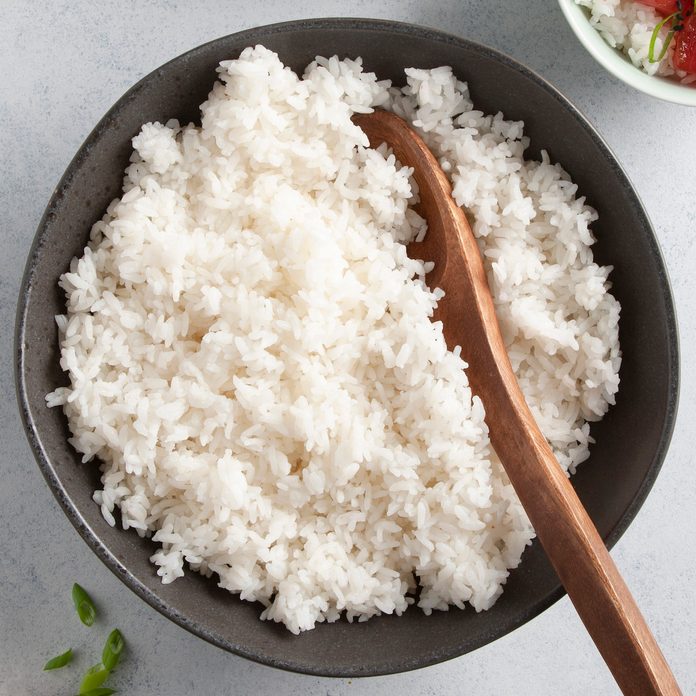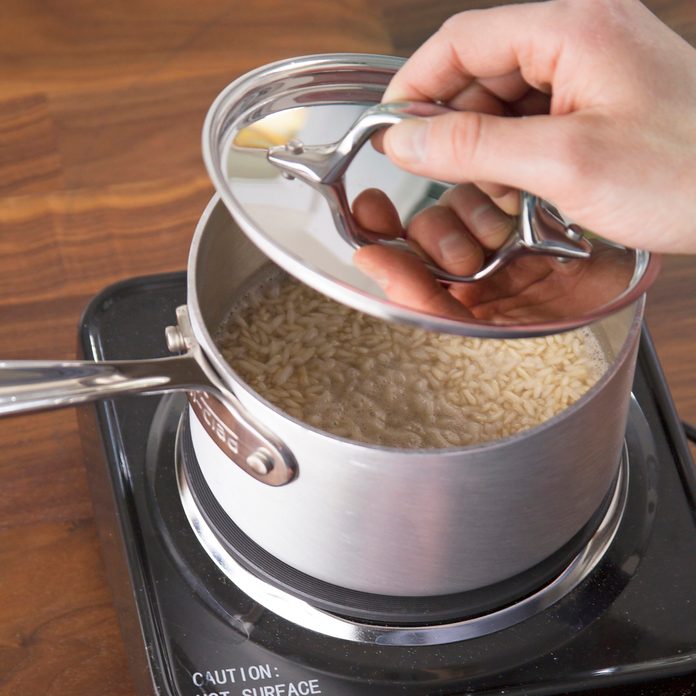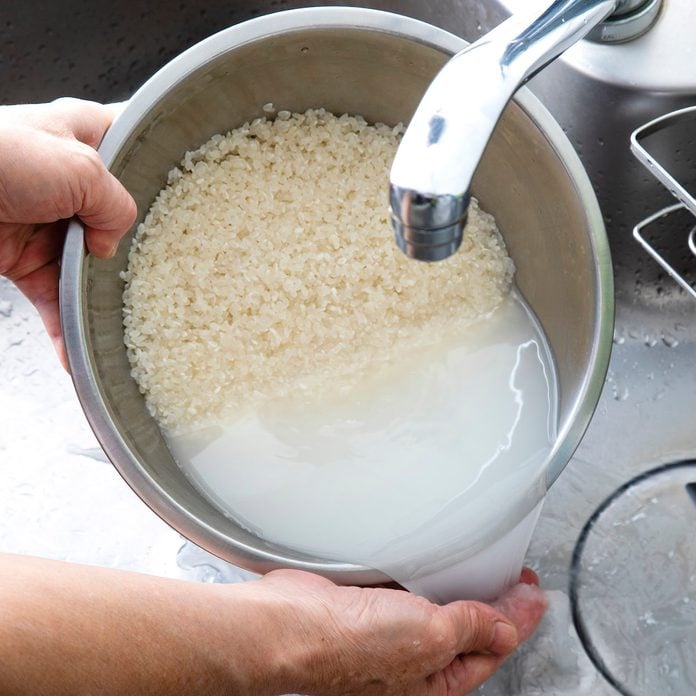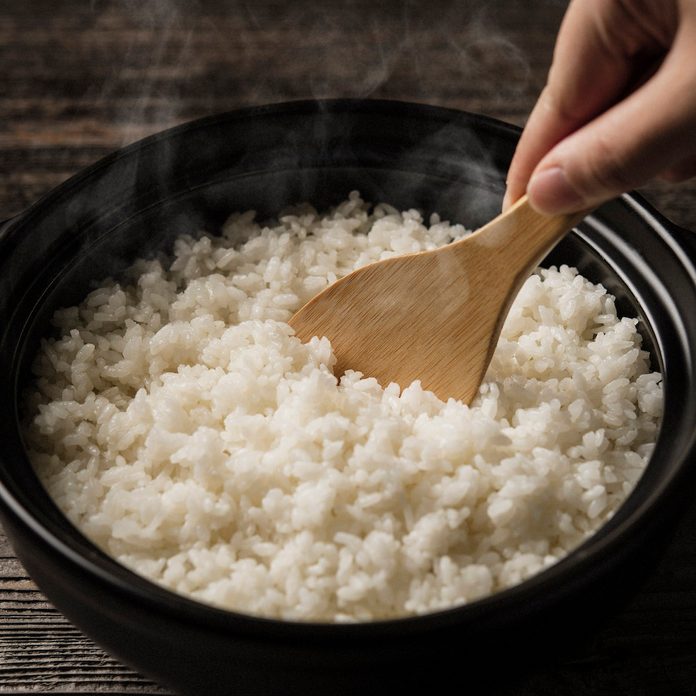
Whether it’s in a burrito, rolled up in sushi or served as a side with dinner, rice is the perfect way to bulk up a dish. But while rice is seemingly straightforward to make, it’s incredibly easy to mess up. Here are some common ways that rice can go wrong, as well as tips for how to cook rice that’s close to perfect every time.

The Problem: Burnt Rice
How to fix burnt rice
Turn your burner way down! A scorched pot probably means that the burner was too high. Put your burner on the lowest setting—the steam should be doing all the work, not the burner. Also check that you’re using a heavy-bottomed pot, like this sturdy saucepan—a thin pot will expose the grains to too much direct heat.

The Problem: Mushy Rice
How to fix mushy rice
Double check the measurements for your rice and liquid. The ideal rice-to-water ratio depends on the type of rice you’re making and the method you’re using to cook it.
As a rule of thumb, remember this: 1 cup of rice + 2 cups of water = 3 cups of cooked rice. This ratio typically works for making white and and brown rice on the stove. However, it’s always a good idea to refer to the package instructions for exact ratios, especially if it’s a different type of rice.
Editor’s tip: If you’re using a rice cooker, refer to the manufacturer’s directions about how much rice and water to use—it’s often a 1-to-1 ratio.

The Problem: Undercooked Rice
How to fix undercooked rice
Make sure the lid of your saucepan is tight. If the lid isn’t sealed properly, steam will escape from the pot rather than cook the rice. For the same reason, avoid lifting the lid to check on your rice—this interrupts the cooking process.
Of all of the rice varieties, wild rice (which isn’t actually rice!) takes the longest to cook. If it tastes too crunchy after the recipe cook time is up, simmer it a bit longer. For more tips, check out our guide to how to cook wild rice.
Editor’s tip: Another easy remedy: Lay a clean kitchen towel between the pot and lid to keep steam from getting out. Just make sure the towel isn’t touching your burner.

The Problem: Clumpy White Rice
How to fix clumpy rice
Whether you’re making plain white rice, jasmine rice, basmati rice, sushi rice or even sticky rice, rinse it before cooking. Rinsing the rice removes excess starch, which is what causes clumping.
You can also add a touch of oil or butter to your pot to help prevent sticking even further. Learn how to wash rice the right way.
However, it’s not necessary to rinse all types of rice. For example, you generally don’t need to rinse brown rice. Also, don’t rinse the rice if you’re making a creamy rice dish like risotto—in that case, you want to retain the rice’s starchiness.

The Problem: Uneven Cooking
How to fix unevenly cooked rice
We know it’s tempting to dig into a pot of rice as soon as it’s done, but let it rest first! Remove the pot from the heat and let it stand, covered, for 10 or 15 minutes. This will allow the heat to redistribute inside the pot, leading to more evenly cooked rice.
Once your rice is done resting, fluff it with a fork or rice paddle before you serve it. If you have any leftover rice, save it in the refrigerator and use it to make fried rice.

The Problem: Bland Rice
How to fix bland rice
Add some flavor! There are many ways to do this:
- Toss some butter and salt into the pot with your rice and water.
- Replace the water with more flavorful liquids such as broth or coconut milk, like in this Shrimp with Coconut Rice recipe.
- For a nutty taste, lightly toast the rice in the pot before adding the cooking liquid.
- Add mix-ins to your cooked rice, like in this Jasmine Rice with Coconut & Cherries recipe.
The more of these methods you use, the more interesting and complex your rice dish will be.

